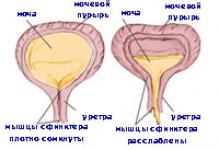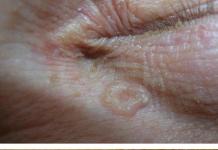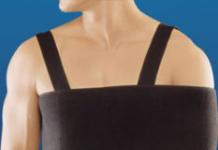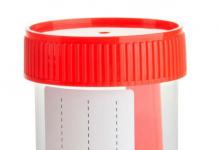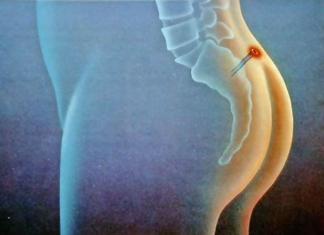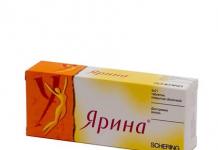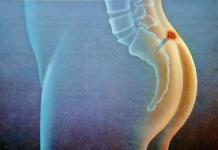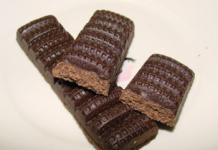Codelac is a combined medicine with antitussive and expectorant effects. Instructions for use recommend taking Phyto syrup, Broncho tablets, and thyme elixir for unproductive coughs that occur with attacks.
Release form and composition
The drug is available in the following dosage forms:
- Elixir Codelac Broncho with thyme.
- Pills.
- Codelac Phyto syrup.
- Codelac Broncho tablets.
1 tablet of Codelac contains codeine (INN - Codeine) - 8 mg, sodium bicarbonate - 200 mg, licorice root in powder form - 200 mg, lanceolate thermopsis herb - 20 mg.
Composition of Codelac Phyto syrup: 5 ml contains codeine phosphate - 4.5 mg, dry thermopsis extract - 0.01 g, thick licorice root extract - 0.2 g, liquid thyme extract - 1 g.
Indications for use
What does Codelac (tablets and syrup) help with? The main indications for the use of Codelac Neo syrup are respiratory diseases accompanied by paroxysmal, painful, unproductive dry cough.
This remedy is highly effective for whooping cough and as an adjuvant medication before diagnostic procedures of the respiratory tract (bronchoscopy, for example).
Instructions for use
Codelac tablets
The drug is prescribed orally, 1 tablet 2-3 times a day for several days. Treatment should be short-term. It should be borne in mind that the maximum doses of codeine for adults when taken orally are: single - 50 mg, daily - 200 mg.
In patients with impaired renal function, the elimination of codeine is slowed down, so it is recommended to increase the interval between doses of Codelac.
Syrup
The drug is prescribed orally depending on age:
- Children 12-15 years old and adults - 15-20 ml.
- Children 8-12 years old - 10-15 ml.
- Children 5-8 years old - 10 ml.
- Children 2-5 years old - 5 ml.
The daily dose should be divided into 2-3 doses. The drug should be taken between meals. Treatment should be short-term (several days).
Elixir with thyme
Take orally during meals, with a small amount of water. Adults and children over 12 years old - 10 ml 4 times a day. Children aged 2 to 6 years are prescribed 2.5 ml 3 times a day, aged 6 to 12 years - 5 ml 3 times a day. The maximum duration of treatment without consulting a doctor is 5 days.
pharmachologic effect
Codeine, which is part of Codelac, belongs to the group of narcotic analgesics with a pronounced antitussive effect. The substance actively reduces the excitability of the cough center, without depressing the respiratory center, and also significantly reduces the severity of non-productive cough, regardless of its etiology.
Biologically active substances, which are contained in thermopsis grass, have a pronounced stimulating effect on the vomiting and respiratory centers. The isoquiline alkaloids contained in thermopsis increase the activity of the ciliated epithelium and enhance the functions of the bronchial glands, which significantly enhances the expectorant effect of the drug and facilitates the removal of secretions.
Sodium bicarbonate, penetrating the bronchial mucosa, changes its acid balance to the alkaline side, which contributes to a rapid decrease in the viscosity of sputum. It also has a stimulating effect on the motility of the ciliated epithelium.
Licorice root has a pronounced expectorant effect, which effectively stimulates the work of the ciliated epithelium and significantly increases the secretory activity of the bronchial glands. Licorice root also has a mild antispasmodic effect on the smooth muscles of the bronchi.
The use of Codelac reduces the excitability of the cough center and significantly facilitates the excretion of sputum. After ingestion, therapeutic effect the drug is observed after 50-60 minutes and lasts up to 6 hours. The drug actively affects coughs of various etiologies.
Contraindications

- Pregnancy and breastfeeding (lactation).
- Hypersensitivity to the components of the drug.
- Respiratory failure.
- Bronchial asthma.
- Concomitant use with alcohol and analgesics central action(nalbuphine, buprenorphine, pentazocine).
- Age up to 2 years.
Caution should be exercised in case of increased intracranial pressure.
Side effects
- In the form of an allergy: itchy skin, rashes.
- Digestive system: nausea, constipation, vomiting.
- Nervous system: drowsiness, headache.
Children, pregnancy and breastfeeding
The drug is contraindicated for use during pregnancy and lactation (breastfeeding).
Codelac can be used for children from the age of 2 years.
special instructions
The drug should be taken with caution in case of increased intracranial pressure. It should be borne in mind that long-term treatment can provoke drug dependence. Codelac is not prescribed with mucolytic and expectorant drugs. Before using antitussives, it is worth clarifying the cause of the cough.
The drug contains codeine and is a doping. Codelac has a sedative effect. When using it, it is not recommended to engage in activities that require increased attention and speed of psychomotor reactions.
Drug interactions
With the simultaneous use of certain drugs, the following effects may develop:
- Adsorbents, coatings and astringents: decreased absorption of codeine.
- Chloramphenicol: enhances the effects of codeine.
- Cardiac glycosides (including digoxin): enhancing their action.
- Sleeping pills, antipsychotics, antihistamines, sedatives, centrally acting analgesics, anxiolytics: increased depression of the respiratory center and sedative effect (the combination is not recommended).
Analogues of the drug Codelac
Analogs have similar antitussive effects:
- Bronchoton.
- Rengalin.
- Cofanol.
- Paracodamol.
- Codipront.
- Terkodin.
- Fervex for dry cough.
- Alex Plus.
- Glycodin.
- Broncholine sage.
- Terasil-D.
- Neo-Kodion.
- Terpincode.
- Bronchocin.
- Tussin plus.
- Bronchitusen Vramed.
- Padevix.
- Codelmixt.
- Tedein.
- Codterpin.
Vacation conditions and price
The average price of Codelac (tablets No. 10) in Moscow is 217 rubles. Available without a prescription.
Store in a dry place, protected from light, out of reach of children, at a temperature not exceeding 25 °C. Shelf life – 4 years.
Post Views: 561
Registration number: LP-001847
Tradename drug: Codelac ® Neo
International nonproprietary name: butamirate
Dosage form : syrup.
Composition per 5 ml
Active substance: butamirate citrate – 7.5 mg;
Excipients: sorbitol (Neosorb 70/70 B, sorbitol syrup) 2025.0 mg, glycerol (glycerol) 1450.0 mg, ethanol 95% (ethyl alcohol 95%) 12.69 mg, sodium saccharinate 3.0 mg, benzoic acid 5, 75 mg, vanillin 3.0 mg, sodium hydroxide solution 30% 1.55 mg, purified water up to 5 ml.
Description
Colorless liquid with a vanilla odor.
Pharmacotherapeutic group: centrally acting antitussive.
ATX code: R05DB13
Pharmacological properties Pharmacodynamics
A non-opioid antitussive agent that has a direct effect on the cough center. It has an antitussive, expectorant, moderate bronchodilator and anti-inflammatory effect, improves spirometry (reduces airway resistance) and blood oxygenation.
Pharmacokinetics
Suction
After oral administration, butamirate is quickly and completely absorbed from gastrointestinal tract. After taking 150 mg of butamirate, the maximum concentration of the main metabolite (2-phenylbutyric acid) in the blood plasma is reached after approximately 1.5 hours and is 6.4 mcg/ml.
Distribution and metabolism
Hydrolysis of butamirate initially to 2-phenylbutyric acid and diethylaminoethoxyethanol begins in the blood. These metabolites also have antitussive activity and, like butamirate, are highly (about 95%) bound to plasma proteins, resulting in their long half-life. 2-phenylbutyric acid is partially metabolized by hydroxylation.
When taking the drug again, no accumulation is observed.
Removal
The half-life of butamirate is 6 hours. Metabolites are excreted mainly by the kidneys. Moreover, 2-phenylbutyric acid is mainly excreted in the form associated with glucuronic acid.
Indications for use
Dry cough of any etiology, including whooping cough; to suppress cough in the preoperative and postoperative period, during surgical interventions and bronchoscopy.
Contraindications
Hypersensitivity to the components of the drug, fructose intolerance, pregnancy (first trimester), breastfeeding period. Children under 3 years of age.
Use of the drug during pregnancy and breastfeeding
There is no data on the safety of the drug during pregnancy and its passage through the placental barrier. The use of the drug in the first trimester of pregnancy is contraindicated. In the second and third trimesters of pregnancy, the use of the drug is possible taking into account the balance of benefit to the mother and potential risk to the fetus.
The penetration of the drug into breast milk has not been studied, therefore the use of the drug during breastfeeding is not recommended.
Directions for use and doses
The syrup should be taken orally before meals.
The syrup is prescribed to children: aged 3 to 6 years - 5 ml 3 times a day; from 6 to 12 years - 10 ml 3 times a day; 12 years and older - 15 ml 3 times a day. Adults – 15 ml 4 times a day.
When taking the drug, you should use a measuring device.
If the cough persists more than 5 days after starting treatment, you should consult a doctor.
Side effect
From the central side nervous system: dizziness that goes away when the drug is stopped or the dose is reduced; drowsiness.
From the outside digestive system: nausea, diarrhea. Allergic reactions: skin rash, itching.
Other: exanthema.
Overdose
Symptoms: nausea, vomiting, drowsiness, diarrhea, dizziness, decreased blood pressure, impaired coordination of movements.
Treatment: activated carbon, saline laxatives, symptomatic therapy (according to indications).
Interaction with other drugs
Any drug interactions for butamirate are not described. During treatment with the drug, it is not recommended to drink alcoholic beverages, as well as drugs that depress the central nervous system (hypnotics, antipsychotics, tranquilizers and other drugs).
special instructions
The syrup contains sodium saccharinate and sorbitol as sweeteners, so it can be used by patients with diabetes.
There is a danger when using the drug in patients with a tendency to develop drug dependence, with liver diseases, alcoholism, epilepsy, and brain diseases.
Impact on the ability to drive a car and operate machinery
It is recommended to refrain from driving vehicles and occupations with others potentially dangerous species activities that require increased concentration and speed of psychomotor reactions, since the drug can cause dizziness.
Release form
Syrup 1.5 mg/ml.
100 and 200 ml in dark (amber) glass bottles. One bottle, along with instructions for use and a measuring spoon, is placed in a cardboard pack.
Storage conditions
Store at a temperature not exceeding 25 oC. Keep out of the reach of children.
Best before date
2 years. Do not use after the expiration date stated on the packaging.
Codelac – medicine with an antitussive effect, in addition, the drug promotes better discharge of bronchial secretions, that is, it has an expectorant effect.
What are the composition and release form of Codelac tablets?
The pharmaceutical industry produces the drug in tablets; they can have different colors, ranging from brown to yellow; normally, white or dark brown inclusions are allowed.
The tablets contain the following active ingredients: codeine, added sodium bicarbonate, in addition, powder prepared from licorice root and thermopsis lanceolate herb. Among the auxiliary compounds we can note: potato starch, as well as talc and microcrystalline cellulose.
The medicine is sold in contour packages. You can buy it without a prescription. The shelf life of the medicine is four years from the date of pharmaceutical production of the tablets. Codelac should be stored at a temperature of no more than 25 degrees.
What is the effect of Codelac?
The drug Codelac has a combined composition. Codeine has a central antitussive effect and helps reduce the excitability of the cough center. When used in excessive doses, it can depress breathing and also inhibits peristaltic movements of the intestines, in addition, it causes miosis, sometimes constipation, nausea and vomiting. This active component can provoke drug dependence.
The next active compound of the drug Codelac is thermopsis herb; it contains isoquinoline alkaloids, which have a stimulating effect on the respiratory center and also stimulate the vomiting center. This representative of the flora has a pronounced expectorant effect, as a result, the secretory function of the bronchial glands increases, in addition, the activity of the so-called ciliated epithelium increases, and in general the evacuation of secretions is accelerated.
Another component of Codelac is sodium bicarbonate; it is capable of changing the pH of mucus, which is localized in the bronchi, changing it to the alkaline side. In addition, this substance reduces the excessive viscosity of sputum, and also stimulates the motor function of the so-called ciliated epithelium.
Licorice root, which is also present in Codelac, has an expectorant effect on the body due to the glycyrrhizin present in the plant; it activates the ciliated epithelium that lines the trachea and bronchi, and also enhances the secretory function of the mucous membranes of the respiratory tract.
In addition to the listed properties, licorice root has an antispasmodic effect on the body, in particular on smooth muscles, this is due to the flavone compounds present in this plant.
The drug promotes high-quality evacuation of mucus directly from the respiratory tract when the patient has a severe cough, in addition, the drug weakens the cough reflex. About thirty minutes or one hour after taking the tablets, the maximum effect of the medication occurs.
What are the indications for use of Codelac?
The drug Codelac is prescribed as a symptomatic treatment in the presence of dry cough of various origins that occurs against the background of bronchopulmonary diseases.
What are the contraindications for use of the medicine Codelac?
The instructions for use prohibit the use of the drug Codelac (tablets) in the following cases:
With respiratory failure;
At breastfeeding;
Up to two years of age;
At bronchial asthma;
Do not use the medicine during pregnancy;
Codelac should not be used in conjunction with centrally acting analgesics, such as buprenorphine and nalbuphine.
It is contraindicated to take the drug together with alcohol; in addition, Codelac is not used if you are hypersensitive to the components of this medication.
What are the uses and dosages of Codelac tablets?
The drug Codelac is prescribed orally, one tablet up to three times a day. Treatments should not last long. It's worth knowing that maximum dose Codeine per day should not exceed 200 mg, and a single dose should not exceed 50 mg.
Overdose from Codelac
In case of an overdose of Codelac, the patient will develop the following symptoms: arrhythmia, drowsiness, vomiting, skin itching, possible nystagmus, bradycardia, and atony of the bladder.
In such a situation, the patient undergoes urgent gastric lavage, is prescribed symptomatic treatment, and is also given the administration of , which is an antagonist of codeine. If necessary, the patient is hospitalized in a hospital.
What are the side effects of Codelac?
The drug Codelac can cause the following side effects: possible nausea, drowsiness, vomiting, constipation, possible headache, itching, and urticaria. With prolonged use of the medication, the patient may develop a drug dependence directly to codeine.
With great caution, Codelac tablets instructions for use and doctors prescribe to patients with increased intracranial pressure. In case of kidney pathology, the removal of the drug from the body may be somewhat slower, therefore, it is necessary to increase the interval between taking the tablets.
How to replace Codelac, what analogues should I use?
Currently, no analogues have been developed.
Conclusion
Before taking Codelac tablets, the patient should consult with a qualified healthcare professional.
The patient must independently study the instructions for use of the prescribed drug. Be healthy!
Codelac® Tablets - packaging contour cell 10, cardboard pack 2 - EAN code: 4602196000138- No. P N003177/01, 2006-12-29 from Pharmstandard OJSC (Russia) - manufacturer: Pharmstandard-Tomskkhimpharm OJSC [Tomsk, Lenin Ave.] (Russia) - Expired 2009-02-18
Latin name
Codelac®Active substance
Codeine Sodium hydrocarbonate Licorice roots of Thermopsis lanceolatae herba (Codeine Sodium hydrocarbonate Glycyrrhizae radiсes Thermopsidis lanceolatae herba)ATX
R05FA Opium derivatives in combination with expectorantsPharmacological group
Antitussives in combinationsNosological classification (ICD-10)
R05 CoughComposition and release form
1 tablet contains codeine 0.008 g, thermopsis herb powder 0.02 g, sodium bicarbonate 0.2 g, licorice root powder 0.2 g - in a blister pack of 10 pcs. or in a cardboard pack of 2 blister packs of 10 pcs.
pharmachologic effect
Pharmacological action - antitussive, expectorant.Reduces the excitability of the cough center, facilitates sputum production.
Pharmacodynamics
Reduces the intensity and frequency of cough (codeine), increases the secretion of bronchial glands (thermopsis) and reduces the viscosity of sputum due to alkalization (sodium bicarbonate) - has anti-inflammatory and antispasmodic effect(liquorice root).
Indications for Codelac®
Cough of various etiologies.
Contraindications
Hypersensitivity, childhood up to 2 years.
Side effects
From the nervous system and sensory organs: headache, drowsiness.
From the gastrointestinal tract: nausea, vomiting, constipation.
Other: allergic reactions.
Interaction
Enhances (codeine) the effect of analgesics, hypnotics and sedatives.
Directions for use and doses
Inside, 1 tablet. 2-3 times a day.
Storage conditions for Codelac®
In a dry place, protected from light, at a temperature not exceeding 25 °C.Keep out of the reach of children.
Shelf life of Codelac®
4 years.Latest update of the description by the manufacturer
01.07.2002Other packaging options for the drug are Codelac®.
Codelac® Tablets - contour packaging 10, cardboard pack 1 - EAN code: 4602196000992- No. P N003177/01, 2006-12-29 from Pharmstandard OJSC (Russia) - manufacturer: Pharmstandard-Tomskkhimpharm OJSC [Tomsk, Lenin Ave.] ( Russia) - Expired 2009-02-18 Codelac® Tablets - contour packaging 10, cardboard pack 2 - EAN code: 4602196000138 - No. Р N003177/01, 2006-12-29 from Pharmstandard OJSC (Russia) - manufacturer: Pharmstandard-Tomskkhimpharm OJSC [Tomsk, Lenin Ave.] (Russia) - Expired 2009-02-18 Codelac® Tablets - contour packaging 10 cells, cardboard pack 1 - EAN code: 4601669003645 - No. P N003177/01, 2008-10-16 from Pharmstandard OJSC (Russia) - manufacturer: Pharmstandard-Leksredstva (Russia)



